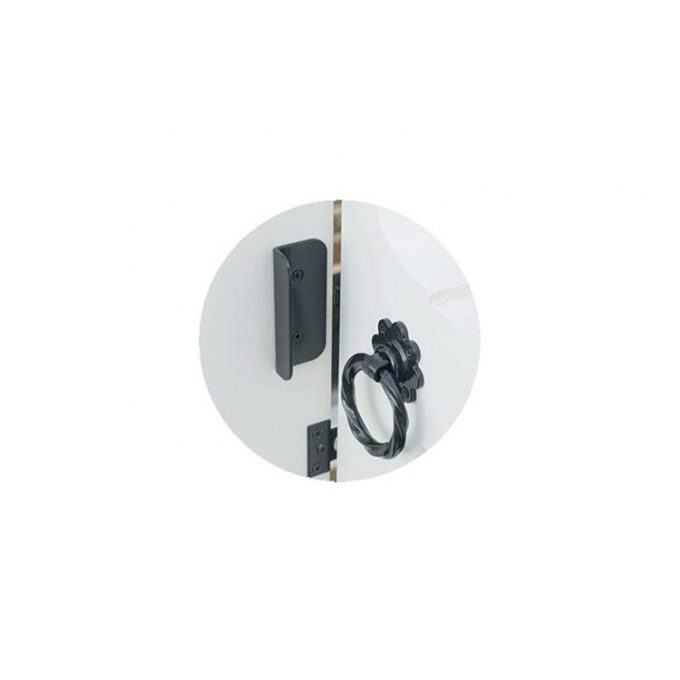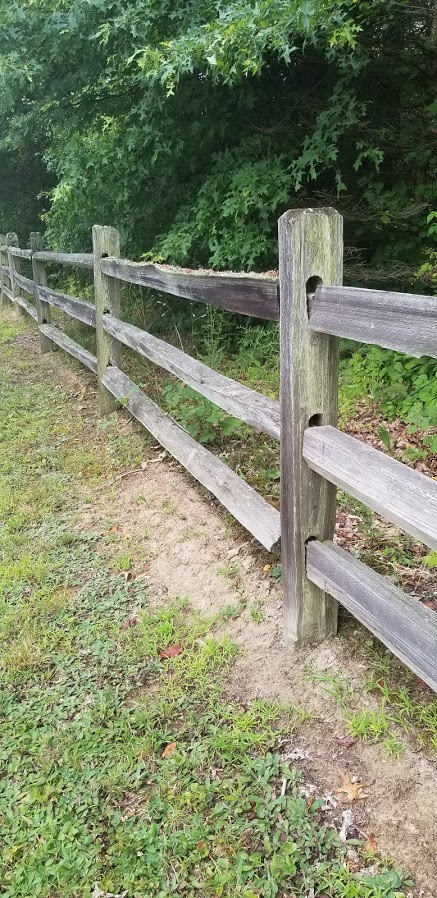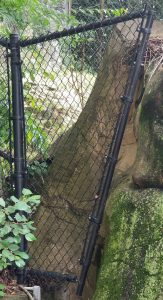Installing Gate Stops on Swing Gates
Installing gate stops on your new or old gate is one of the least expensive and most valuable improvements a fence contractor or homeowner can make. Costing only few dollars, simple to install gate stops have a simple function – to prevent the gate from opening or closing too far. Over extending a gate may cause extreme damage to gate, adjacent fence, hinge(s), or gate closer. Installing an inexpensive gate stop is a cheap insurance policy against gate damage.
Think of most residential or commercial doors, and you’ll quickly visualize wood or metal trim installed on the inside of door jambs to prevent the door from closing past its proper point. Likewise, door stops are installed to prevent swing doors from crashing into adjacent walls, or opening too far and ripping doors off hinges. If these weren’t there, hinges would break, fasteners shear, and possibly doors split. Who doesn’t have a door knob imprint on drywall from a missing, or poorly adjusted door stop?
The practicalities of installing a gate stop can be challenging. We often don’t have adjacent walls to simply mount too, hinges do not come with built in stops, and the wind outside can be fierce – ripping gates off hinges each year. Fence contractors, gate installers, and do-it-yourself fence homeowners will need to consider mounting a gate stop on concrete surface (if one exists), or setting a post in the ground specifically to use as a gate stop.
For many in the fence industry, aluminum self-closing hinges, polymer self-closing hinges, stainless steel self-closing hinges, spring-activated gate closers, and hydraulic gate closers constitute a good deal of the budget to install a high quality self-closing gate. Many of the fence specialty gate hardware items require gate stops in the open and close position not only to function properly, but also to maintain warranty coverage from the manufacturers.
Solutions do exist for fencers though. For wood fence gates, ripping down a cedar or matching wood picket and tacking to the inside door jamb, at least on latch post, can be an extremely inexpensive solution over a gate being closed too far, ripping lag screws out of gate. Some wood gate latches may have an inherent gate stop built it, physically preventing gate from closing too far. Wood fence gate stops are available specifically for wood gates which install quickly with screws.
For Chain Link Gates, gate holdbacks and chain link fence gate stops can serve two useful purposes: to prevent gate from opening too far (this will usually force hinges to pivot and need adjusted) and hold the gate in the open position to pass thru without gate closing. Chain Link Hinges are sturdy, but usually rely on wrap-around bolt-on methods for installation.
For Vinyl Swing Gates, vinyl fence gate stops specifically designed for vinyl gates are available in materials matching popular polymer vinyl gate hinges; some even have built-in gate handles.
Ornamental Steel Swing Gates, and Ornamental Aluminum Swing Gates, gate stops are plentiful since flat surfaces are usually involved. Simple face mount, jamb mount, and separate post mount gate stops can prevent damage to gates and hardware when installed properly.
Simply put, installing inexpensive gate stops for the open and closed position on swing gates is a ‘must-do.’










